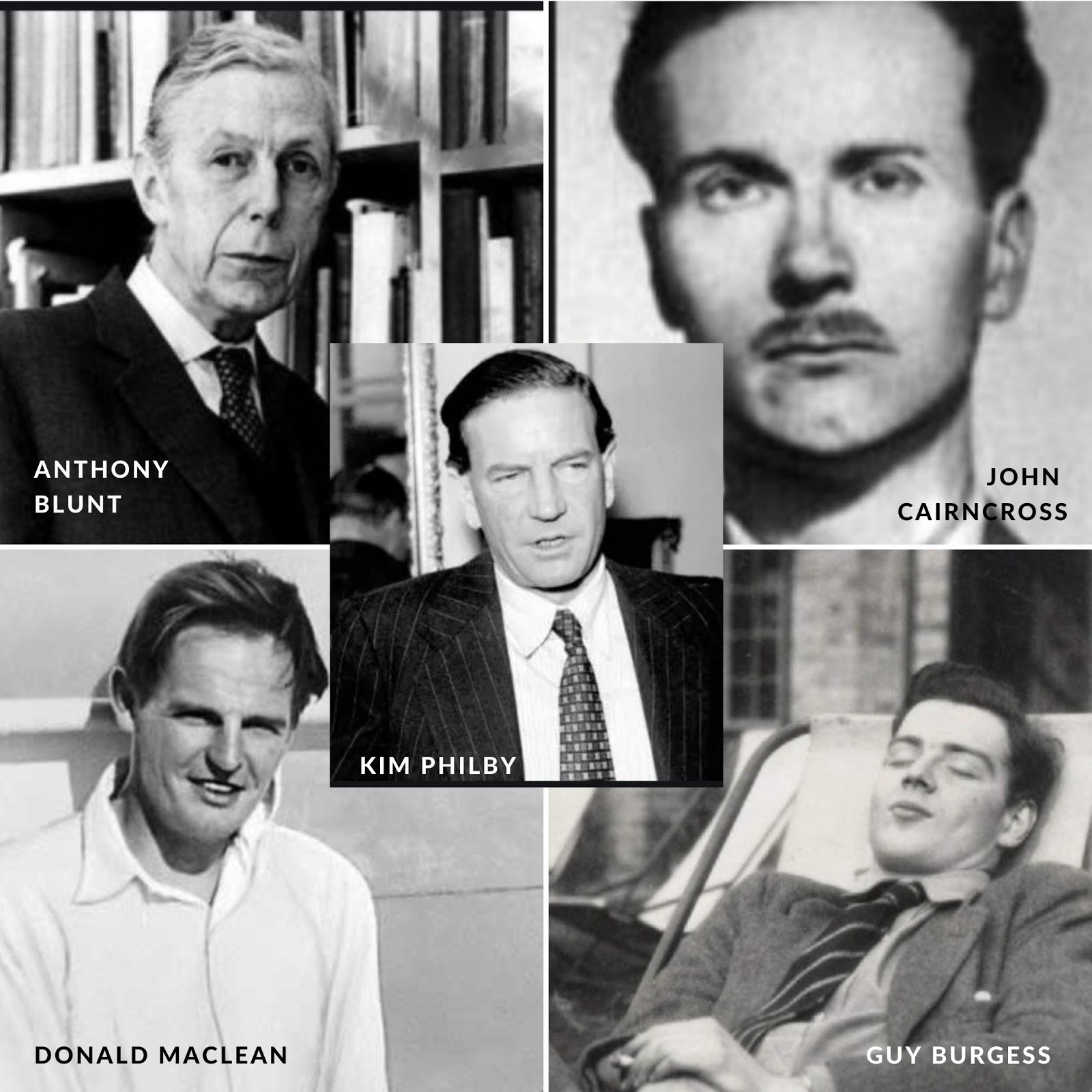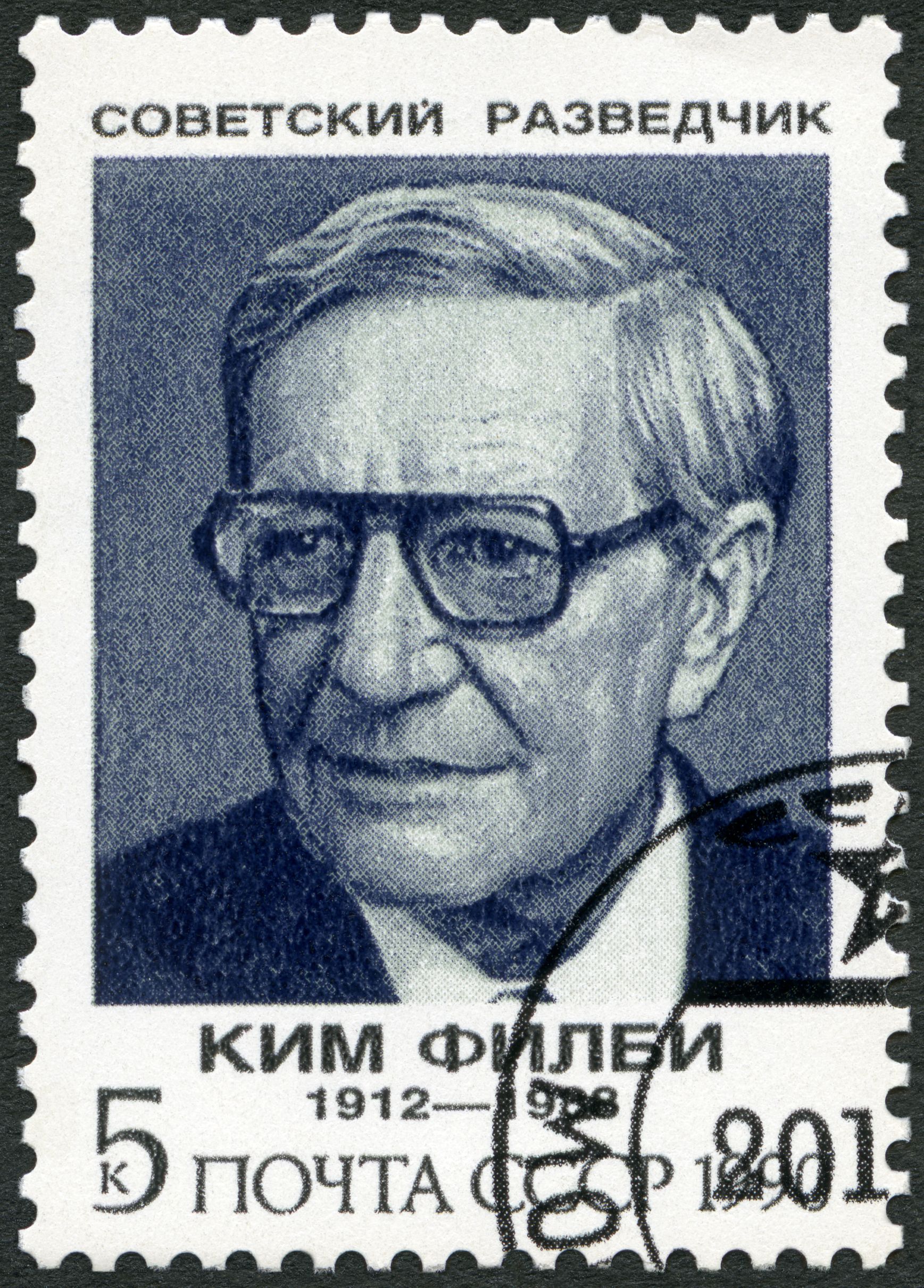Contents
- 1 Origins and Recruitment: The Foundations of the Cambridge Five, Britain’s Most Infamous Spy Ring
- 2 Infiltration and Espionage: How the KGB Managed to Plant British Spies in the British Intelligence Services
- 3 The Unraveling and Defections: How Soviet Era KGB Spies in the British Intelligence Services were Discovered
- 4 The Incompetence of British Intelligence Services
- 5 Motivations and Legacy: Why Did the Cambridge Five Betray Their Country?
The Cambridge Five were a group of highly educated British men who infiltrated their country’s intelligence services and passed secrets to the Soviet Union during the Cold War. Consisting of Guy Burgess, Donald Maclean, Anthony Blunt, John Cairncross, and Kim Philby, their treachery exposed the vulnerabilities of British intelligence and underscored the ideological divisions of the 20th century.
Origins and Recruitment: The Foundations of the Cambridge Five, Britain’s Most Infamous Spy Ring
The group earned its name from their shared connection to the University of Cambridge, where they were recruited by Soviet intelligence in the 1930s. During this time, Cambridge was a hub of intellectual and political ferment, with socialism and communism attracting many idealistic students disillusioned by capitalism and the rise of fascism in Europe.
Soviet recruiters capitalized on these sentiments, identifying promising candidates who could infiltrate key British institutions. The Cambridge Five were united by their commitment to Marxist ideology and a shared belief that Soviet communism represented the best hope for defeating fascism and achieving global equality.
Infiltration and Espionage: How the KGB Managed to Plant British Spies in the British Intelligence Services
After graduating, the members of the Cambridge Five secured influential positions in the British government, intelligence services, and foreign offices. Kim Philby rose to prominence within #MI6, while Donald Maclean and Guy Burgess worked in the Foreign Office. Anthony Blunt became a respected art historian and intelligence officer, and John Cairncross, though less prominent, provided crucial secrets from the Treasury and later the Government Code and Cypher School.

Their espionage activities were highly effective. The Cambridge Five passed vital information to the Soviet Union, including wartime strategies, nuclear research, and diplomatic communications. Their betrayal had far-reaching consequences, compromising Allied efforts during World War II and giving the Soviets an advantage in the early stages of the #ColdWar.
Related: The British MI6 Agent Turned Russian Spy: The Story of Kim Philby
The Unraveling and Defections: How Soviet Era KGB Spies in the British Intelligence Services were Discovered
The group’s activities began to unravel in the 1950s. Donald Maclean’s increasing erratic behavior raised suspicions, and his disappearance alongside Guy Burgess in 1951 confirmed fears of Soviet infiltration. Investigations eventually implicated Kim Philby, but a lack of concrete evidence allowed him to avoid prosecution. Anthony Blunt and John Cairncross were exposed later, though both managed to avoid the public scrutiny that engulfed Philby, Burgess, and Maclean.
Philby’s defection in 1963 marked the final blow to the group’s legacy. His escape to Moscow, combined with the earlier defections, severely damaged the reputation of British intelligence and heightened tensions between Britain and the United States.
The Incompetence of British Intelligence Services
The successful infiltration of the Cambridge Five into the heart of British intelligence highlights significant failures in the nation’s security apparatus. MI5 and MI6 were unable to detect or prevent these spies from ascending to positions of power, allowing them to operate unimpeded for years.
One of the most glaring oversights was the lack of thorough vetting procedures during the recruitment process. The elite background of the Cambridge Five and their connections to prestigious institutions like Cambridge University led to an assumption of trustworthiness. British intelligence services at the time often relied on class-based assumptions, believing that individuals from the upper echelons of society were inherently loyal to their country. This blind spot allowed committed Soviet agents to infiltrate key government institutions.

Even when warning signs appeared, the intelligence community’s reluctance to act decisively contributed to the damage. For instance, Guy Burgess’s erratic behavior and openly leftist views raised suspicions long before his defection, yet no meaningful action was taken to investigate him thoroughly. Similarly, Kim Philby’s close associations with known defectors like Burgess and Donald Maclean did not result in his dismissal or arrest. The inability of MI6 to connect the dots or act on suspicions demonstrated a dangerous level of complacency.
Additionally, bureaucratic infighting and class-based prejudices within British intelligence undermined efforts to root out spies. Rivalries between MI5 and MI6 prevented effective cooperation, and lower-ranking officers often faced resistance when trying to question or investigate members of the establishment. This culture of elitism and denial created an environment in which espionage could thrive.
The Extent of Soviet Infiltration in British Establishments During the Cold War
The Cambridge Five were not isolated anomalies; their success revealed the depth of Soviet infiltration into British institutions. By the mid-20th century, Soviet intelligence had penetrated multiple layers of British society, including politics, academia, and journalism. This widespread network of informants and operatives reflected the KGB’s strategic focus on embedding agents within influential sectors.
In addition to the Cambridge Five, there were numerous other suspected Soviet sympathizers and informants operating in Britain. Some worked covertly within the civil service, passing sensitive information, while others used their positions in academia and the media to shape public opinion in favor of communist ideology. The Soviet Union exploited Britain’s post-war openness to progressive ideas, leveraging anti-fascist sentiments and disillusionment with capitalism to recruit ideologically motivated agents.

The scale of the infiltration came as a shock to both the British public and their allies. The revelations about the Cambridge Five and other Soviet operatives deeply strained relations between Britain and the United States. The Americans, particularly under the leadership of J. Edgar Hoover and the FBI, began to doubt Britain’s ability to secure classified information, leading to a reduction in intelligence sharing during critical periods of the Cold War.
Lessons Learned and Lingering Questions
The exposure of the Cambridge Five forced British intelligence to confront its vulnerabilities and implement significant reforms. Security protocols were tightened, and recruitment practices became more rigorous, with greater scrutiny applied to individuals seeking access to sensitive roles. MI5 and MI6 also made efforts to improve inter-agency communication to prevent future failures of this magnitude.
However, lingering questions remain about the full extent of Soviet infiltration and the possibility that additional operatives may have gone undetected. Even decades later, new revelations occasionally emerge, keeping the story of the Cambridge Five relevant and casting shadows over the supposed infallibility of Western intelligence during the Cold War.
Ultimately, the Cambridge Five serve as both a cautionary tale and a reminder of the dangers posed by ideological fervor and institutional complacency in the high-stakes world of espionage.
Motivations and Legacy: Why Did the Cambridge Five Betray Their Country?
The motivations of the Cambridge Five were deeply rooted in ideology. Most of the members believed they were acting in the best interests of humanity by supporting the #SovietUnion against fascism and imperialism. However, their actions had profound consequences, weakening trust in British institutions and leading to internal paranoia within the intelligence community.

The legacy of the Cambridge Five remains a potent reminder of the ideological conflicts of the 20th century and the vulnerabilities of even the most secure institutions. Their story continues to fascinate and serve as a cautionary tale about the complex interplay of loyalty, ideology, and betrayal in the shadowy world of espionage.
This article has been written with the help of A.I. for topic research and formulation.









